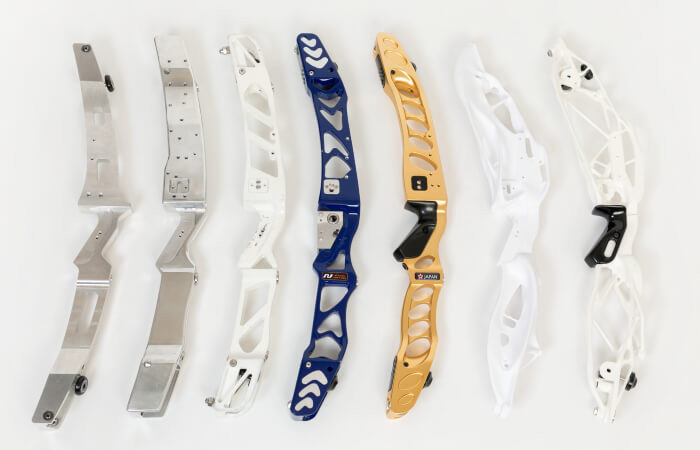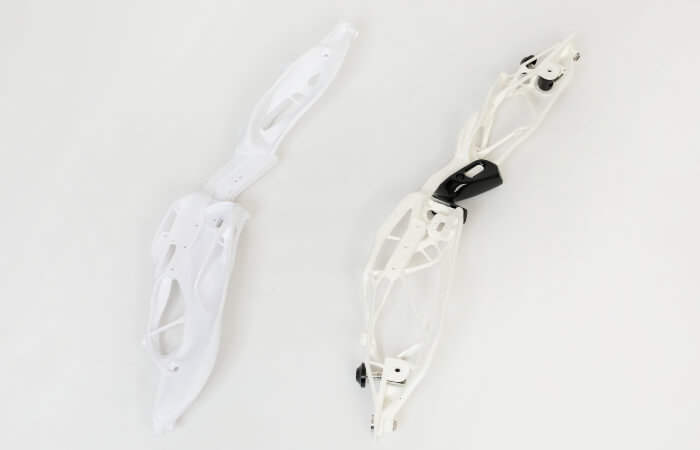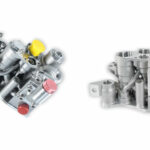When we hear the term generative design, our minds often turn immediately to 3D printing. This is totally understandable, the two technologies do go together quite well.
But it’s easy to overlook the application of generative design to more traditional methods of manufacturing such as CNC machining.
In this post, we’ll be taking a look at a new bow from Japan that has taken advantage of generative design, 3D printing and machining to create a high performing, lightweight bow.

Generative design uses an algorithmic approach to generating structural geometry, based on certain load conditions in the design space. The software will create various iterations of geometries that satisfy the required conditions, growing the geometry from the ground up ultimately providing the designer with multiple options to work with.
This is opposed to topology optimisation, which effectively uses finite element analysis (or similar) to determine load paths, and identify regions of material that can be removed (either manually or automatically).
Both types of design tools have largely the same goals (lightweight, strong and stiff structures) but just go about it differently.
This bow was designed with generative design by Nishikawa Seiki Co. Ltd., a Tokyo metalwork company specializing in precision parts for a range of industries.
The company president, Yoshihisa Nishikawa is a huge archery fan and has a range of bows available through his Nishikawa Archery subsidiary. The archery division specializes in bows machined at his own metalwork company.
In particular, his latest developments have focused on the bow riser. The riser is the part of the bow in the middle and includes the grip and mounting points for the rest of the bow structure.

This custom riser is designed to reduce the oscillations caused on release of the arrow, which allows for a smoother (and more accurate) shot. Typically a heavier bow can reduce the oscillations, but this can be off putting to local archery fans.
Thankfully, generative design has provided a solution enabling a reduction of that weight while also reducing the oscillations.
“Top archers train hard to strengthen their core and tend to favor heavier bows, as they reduce wobbling,” said Nishikawa.
“Newcomers to archery are often frustrated by the weight of the bow, and soon they quit. Of course, there are lighter bows out there, too, but they are harder to aim. If we could make a light high-performance bow, weight could be added to the liking of each archer. I felt this was the sensible approach to our work.”
The researchers at the university used 3D positioning to measure the bowstring as it was drawn, and used that data to create equations showing the load for different shots.
This load information was fed into the generative design software (Autodesk Fusion 360) and the researchers were able to select the best iteration from the generated designs.
Early iterations were prototyped using additive manufacturing, as you can see in the image below.

After the prototypes had been verified they were ultimately manufactured on a 5-axis CNC machining centre.
The end result of the generativity designed part was a 50% reduction in part weight, and vibration levels comparable to leading designs currently available on the market.
While there is room for improvement, the company has its eyes on the future and plans to expand both globally, and into new professional users.
“Looking down the road, we hope to use generative design to make recurve bows that can be used in Olympic competition—and compound bows, as well,” said Nishikawa.


